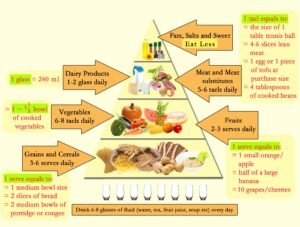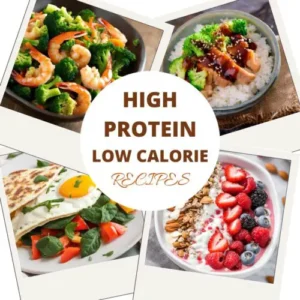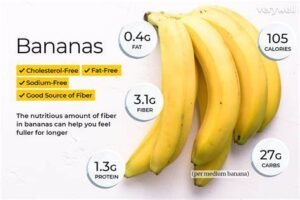Are you ready to transform your body in just 30 days?
It’s not just about hitting the gym; it’s about fueling your body with the right nutrients. In this article, we’ll explore 7 best proven nutrition plans that can help you achieve your weight loss goals in just 30 days.
Nutrition is the secret weapon to achieving your weight loss goals. Think of it as building a house – you need a strong foundation. That foundation is good nutrition.
We’re talking about real-world strategies that have worked for countless people.
Here’s a sneak peek of what we’ll cover:
- The Mediterranean Diet: A delicious and sustainable approach to weight loss.
- The DASH Diet: Perfect for those looking to improve their heart health while shedding pounds.
- The Keto Diet: A high-fat, low-carb plan that can lead to rapid weight loss.
- The Paleo Diet: A diet inspired by our ancestors, focusing on whole, unprocessed foods.
- The Flexitarian Diet: A flexible approach that allows for occasional meat consumption.
- Intermittent Fasting: A time-restricted eating pattern that can boost weight loss.
- The Whole30 Program: A 30-day reset for healthy eating habits.
Get ready to discover the nutrition plan that’s perfect for you!
1. The Mediterranean Diet: A Delicious Path to Weight Loss
Imagine a diet where you can indulge in delicious foods like olive oil, fresh fruits, vegetables, and whole grains. Sounds too good to be true, right? Well, that’s the Mediterranean diet!
This healthy eating plan, inspired by the traditional diets of countries bordering the Mediterranean Sea, is renowned for its numerous benefits.
Let’s explore how it can help you shed pounds and improve your overall well-being.

Benefits of the Mediterranean Diet:
- Weight Loss: By focusing on whole foods and healthy fats, the Mediterranean diet can help you achieve a healthy weight.
- Heart Health: This diet is rich in heart-healthy nutrients like omega-3 fatty acids, antioxidants, and fiber, which can lower your risk of heart disease.
- Improved Blood Sugar Control: The Mediterranean diet can help regulate blood sugar levels, making it beneficial for individuals with diabetes or prediabetes.
- Better Brain Health: Studies have shown that following a Mediterranean diet can improve cognitive function and reduce the risk of neurodegenerative diseases.
A Sample Mediterranean Meal Plan:
- Breakfast: Greek yogurt with berries, nuts, and a drizzle of honey.
- Lunch: Grilled chicken salad with mixed greens, cucumbers, tomatoes, olives, and a vinaigrette dressing.
- Dinner: Baked salmon with roasted vegetables and a side of brown rice.
Customization Tips:
The Mediterranean diet is flexible and can be adapted to suit your preferences. Here are some tips:
- Vegetarian Options: Substitute fish with legumes or tofu.
- Dairy Alternatives: Use plant-based milk and yogurt if you’re lactose intolerant.
- Cultural Variations: Incorporate dishes from different Mediterranean countries to keep things interesting.
Scientific Support:
Numerous studies have shown the effectiveness of the Mediterranean diet for weight loss and overall health.
For example, a large-scale study published in the New England Journal of Medicine found that following this diet was associated with a lower risk of heart disease, stroke, and death.
By embracing the Mediterranean diet, you can enjoy delicious, flavorful meals while achieving your weight loss goals and improving your overall health. So, why not give it a try?
2. The DASH Diet: A Heart-Healthy Approach to Weight Loss
High blood pressure, or hypertension, is a serious health condition that can increase your risk of heart disease, stroke, and other complications.
But did you know that a simple change in your diet can help lower your blood pressure and support weight loss?
The DASH (Dietary Approaches to Stop Hypertension) diet is a proven approach to improving heart health and promoting weight management. Let’s explore how this diet works and its benefits.

The Focus on Sodium:
The DASH diet emphasizes reducing sodium intake. Excess sodium can lead to water retention and increased blood pressure.
By limiting your sodium consumption, you can help regulate your blood pressure and support overall health.
Benefits of the DASH Diet:
- Lower Blood Pressure: The DASH diet has been shown to significantly lower blood pressure, even without medication.
- Weight Loss: By focusing on nutrient-dense foods and limiting unhealthy fats and sugars, the DASH diet can help you achieve a healthy weight.
- Improved Cholesterol Levels: This diet can help lower “bad” LDL cholesterol and raise “good” HDL cholesterol.
- Reduced Risk of Chronic Diseases: Following the DASH diet can lower your risk of heart disease, stroke, type 2 diabetes, and certain types of cancer.
A Sample DASH Meal Plan:
- Breakfast: Oatmeal with fruit and nuts.
- Lunch: Salad with grilled chicken and a vinaigrette dressing.
- Dinner: Baked fish with roasted vegetables and brown rice.
Sustainability Strategies:
To maintain the benefits of the DASH diet, consider these tips:
- Read Food Labels: Be mindful of sodium content in packaged foods.
- Cook at Home: Preparing meals at home gives you more control over the ingredients and sodium content.
- Gradually Reduce Sodium: Make gradual changes to your diet to avoid feeling overwhelmed.
Expert Insights:
Many experts recommend the DASH diet for its effectiveness in improving heart health and promoting weight loss.
For example, the American Heart Association and the National Institutes of Health endorse this diet as a healthy and sustainable approach to managing blood pressure.
By incorporating the DASH diet into your lifestyle, you can take a proactive step toward improving your heart health and achieving your weight loss goals. So, why not give it a try?
3. The Keto Diet: Burning Fat for Fuel
Are you looking for a rapid way to shed pounds? The ketogenic diet, often simply referred to as the keto diet, might be just what you need.
This high-fat, low-carbohydrate diet has gained popularity for its ability to promote rapid weight loss.

How Does the Keto Diet Work?
The keto diet works by putting your body into a state of ketosis. When you significantly reduce your carbohydrate intake, your body begins to burn fat for fuel instead of glucose from carbohydrates.
This process, known as ketosis, can lead to rapid weight loss.
Benefits of the Keto Diet:
- Weight Loss: By burning fat for fuel, the keto diet can help you lose weight quickly.
- Improved Blood Sugar Control: This diet can be beneficial for individuals with diabetes or prediabetes by helping to regulate blood sugar levels.
- Reduced Appetite: Many people report feeling less hungry on the keto diet, which can make it easier to stick to your weight loss goals.
A Sample Keto Meal Plan:
- Breakfast: Scrambled eggs with avocado and bacon.
- Lunch: Salad with grilled chicken, mixed greens, cucumbers, tomatoes, and a vinaigrette dressing made with olive oil.
- Dinner: Steak with roasted vegetables and a side of cauliflower mash.
Addressing Concerns:
While the keto diet can be effective for weight loss, it’s important to be aware of potential risks or challenges:
- Nutrient Deficiencies: Limiting carbohydrates can reduce your intake of certain nutrients, such as fiber and some vitamins. It’s essential to eat a variety of keto-friendly foods to ensure you’re getting adequate nutrition.
- Flu-Like Symptoms: Some people may experience “keto flu” symptoms, including fatigue, headache, and nausea, as their body adjusts to burning fat for fuel.
- Sustainability: Maintaining a keto diet long-term can be challenging, and it may not be suitable for everyone.
Practical Tips:
- Stay Hydrated: Drinking plenty of water is important on the keto diet to help your body flush out ketones.
- Monitor Electrolytes: When you limit carbohydrates, your body loses electrolytes, so it’s important to consume enough sodium, potassium, and magnesium.
- Find Keto-Friendly Alternatives: Look for low-carb substitutes for your favorite foods, such as keto-friendly bread or pasta.
- Manage Cravings: If you experience cravings for carbs, try to find healthy alternatives or distract yourself with other activities.
Before starting the keto diet, it’s recommended to consult with a healthcare professional to ensure it’s right for you and to address any underlying health conditions.
4. The Paleo Diet: Eating Like Our Ancestors
Ever wonder what our ancestors might have eaten? The Paleo diet is based on the idea of eating foods similar to those consumed by our hunter-gatherer ancestors.
By focusing on whole, unprocessed foods, the Paleo diet aims to promote optimal health and weight loss.

Benefits of the Paleo Diet:
- Weight Loss: By avoiding processed foods and focusing on nutrient-dense whole foods, the Paleo diet can help you achieve a healthy weight.
- Improved Metabolic Health: This diet is believed to support optimal metabolic function, which can help regulate hormones and improve insulin sensitivity.
- Reduced Inflammation: The Paleo diet may help reduce inflammation in the body, which is linked to various chronic diseases.
- Improved Gut Health: By eliminating processed foods and focusing on whole grains, the Paleo diet can support a healthy gut microbiome.
A Sample Paleo Meal Plan:
- Breakfast: Scrambled eggs with avocado and bacon.
- Lunch: Salad with grilled chicken, mixed greens, cucumbers, tomatoes, and a vinaigrette dressing made with olive oil.
- Dinner: Steak with roasted vegetables and a side of sweet potatoes.
Cultural Relevance:
While the Paleo diet is based on the idea of eating like our ancestors, it’s important to consider cultural factors.
Many cultures have their own unique dietary traditions that can be incorporated into a Paleo-inspired lifestyle.
For example, you can enjoy fish and seafood, which were important food sources for many ancient civilizations.
Nutritional Education:
While the Paleo diet focuses on whole foods, it’s important to ensure you’re getting adequate amounts of certain nutrients. Some key nutrients that may be lacking in a strict Paleo diet include:
- Legumes: These are a great source of protein and fiber.
- Dairy: If you’re following a strict Paleo diet, you may need to find dairy alternatives to ensure you’re getting enough calcium and vitamin D.
- Whole Grains: While some Paleo followers avoid grains, incorporating whole grains like quinoa or brown rice can provide valuable nutrients.
By following a Paleo diet, you can reconnect with your ancestral roots and enjoy a healthy, sustainable way of eating.
Remember to consult with a healthcare professional to ensure it’s right for you and to address any underlying health conditions.
5. The Flexitarian Diet: A Flexible Approach to Weight Loss
Are you looking for a diet that allows you to enjoy the occasional meat while still reaping the benefits of a plant-based diet?
The flexitarian diet might be the perfect fit for you. This flexible approach emphasizes plant-based foods but allows for occasional meat consumption.

Benefits of the Flexitarian Diet:
- Weight Loss: By focusing on plant-based foods, the flexitarian diet can help you reduce your calorie intake and promote weight loss.
- Improved Health: This diet is rich in fruits, vegetables, whole grains, and legumes, which are linked to various health benefits, including reduced risk of chronic diseases.
- Environmental Sustainability: Reducing meat consumption can help reduce your environmental impact.
A Sample Flexitarian Meal Plan:
- Breakfast: Oatmeal with berries and nuts.
- Lunch: Salad with grilled chicken, mixed greens, cucumbers, tomatoes, and a vinaigrette dressing.
- Dinner: Stir-fry with tofu, vegetables, and brown rice.
Budget-Friendly Options:
The flexitarian diet can be budget-friendly by focusing on affordable plant-based foods. Here are some tips:
- Buy in Bulk: Purchase fruits, vegetables, and grains in bulk to save money.
- Cook at Home: Preparing your meals at home is generally more cost-effective than eating out.
- Plan Ahead: Create a meal plan to avoid impulse purchases and reduce food waste.
- Use Leftovers: Repurpose leftovers into new meals to minimize food waste.
- Choose Plant-Based Proteins: Opt for affordable plant-based proteins like beans, lentils, and tofu.
By incorporating the flexitarian diet into your lifestyle, you can enjoy the benefits of a plant-based diet while still enjoying occasional meat.
It’s a flexible and sustainable approach to weight loss and improved health.
6. Intermittent Fasting: A Flexible Approach to Weight Loss
Intermittent fasting isn’t a diet in the traditional sense; it’s more of a flexible eating pattern that involves cycling between periods of eating and fasting.
This approach can be a powerful tool for weight loss and improved metabolic health.
Benefits of Intermittent Fasting:
- Reduced Calorie Intake: By limiting your eating window, you can naturally reduce your overall calorie intake, leading to weight loss.
- Improved Insulin Sensitivity: Intermittent fasting can help improve your body’s ability to use insulin effectively, which can aid in weight management and reduce the risk of type 2 diabetes.
- Increased Fat Burning: When you fast, your body may switch to burning fat for fuel, which can help you lose weight and improve body composition.
A Popular Intermittent Fasting Schedule: The 16/8 Method
One of the most popular intermittent fasting methods is the 16/8 method. This involves fasting for 16 hours each day and eating within an 8-hour window. For example, you might fast from 7 PM to 11 AM the next day and eat between 11 AM and 7 PM.
Managing Hunger During Fasting Periods:
- Stay Hydrated: Drinking plenty of water can help reduce hunger and keep you feeling full.
- Distract Yourself: Engage in activities that keep your mind occupied, such as reading, exercising, or spending time with loved ones.
- Plan Your Meals: Eating nutritious meals during your eating window can help you feel satisfied and avoid overeating.
Intermittent fasting can be a great way to support your weight loss goals. However, it’s important to listen to your body and choose a schedule that works for you.
If you have any underlying health conditions, it’s recommended to consult with a healthcare professional before starting intermittent fasting.
7. The Whole30 Program: A 30-Day Reset for Your Health
Are you looking for a quick and effective way to improve your health and eating habits? The Whole30 program offers a 30-day reset that can help you eliminate unhealthy foods and regain control of your diet.

What is the Whole 30 Program?
The Whole30 program is a 30-day elimination diet that focuses on removing processed foods, grains, legumes, dairy, and added sugars from your diet.
By eliminating these foods, you can identify any food sensitivities or intolerances and improve your overall health.
Benefits of the Whole 30 Program:
- Improved Digestive Health: Eliminating processed foods and common allergens can help alleviate digestive issues like bloating, gas, and constipation.
- Weight Loss: By focusing on whole, unprocessed foods, you may naturally reduce your calorie intake and promote weight loss.
- Increased Energy: Eliminating inflammatory foods can help boost your energy levels and reduce fatigue.
- Reshaped Eating Habits: The Whole30 program can help you develop healthier eating habits and break free from unhealthy cravings.
A Sample Whole 30 Meal Plan:
- Breakfast: Scrambled eggs with avocado and bacon.
- Lunch: Salad with grilled chicken, mixed greens, cucumbers, tomatoes, and a vinaigrette dressing.
- Dinner: Salmon with roasted vegetables and a side of sweet potatoes.
Psychological Aspects:
The Whole30 program can be challenging, as it requires you to eliminate many foods that you may be accustomed to. However, the psychological benefits can be significant.
By focusing on whole, unprocessed foods, you can improve your relationship with food and reduce cravings for unhealthy options.
The Whole30 program can be a powerful tool for improving your health and well-being.
By committing to 30 days of clean eating, you can reset your body and mind and develop healthier eating habits that will last a lifetime.





